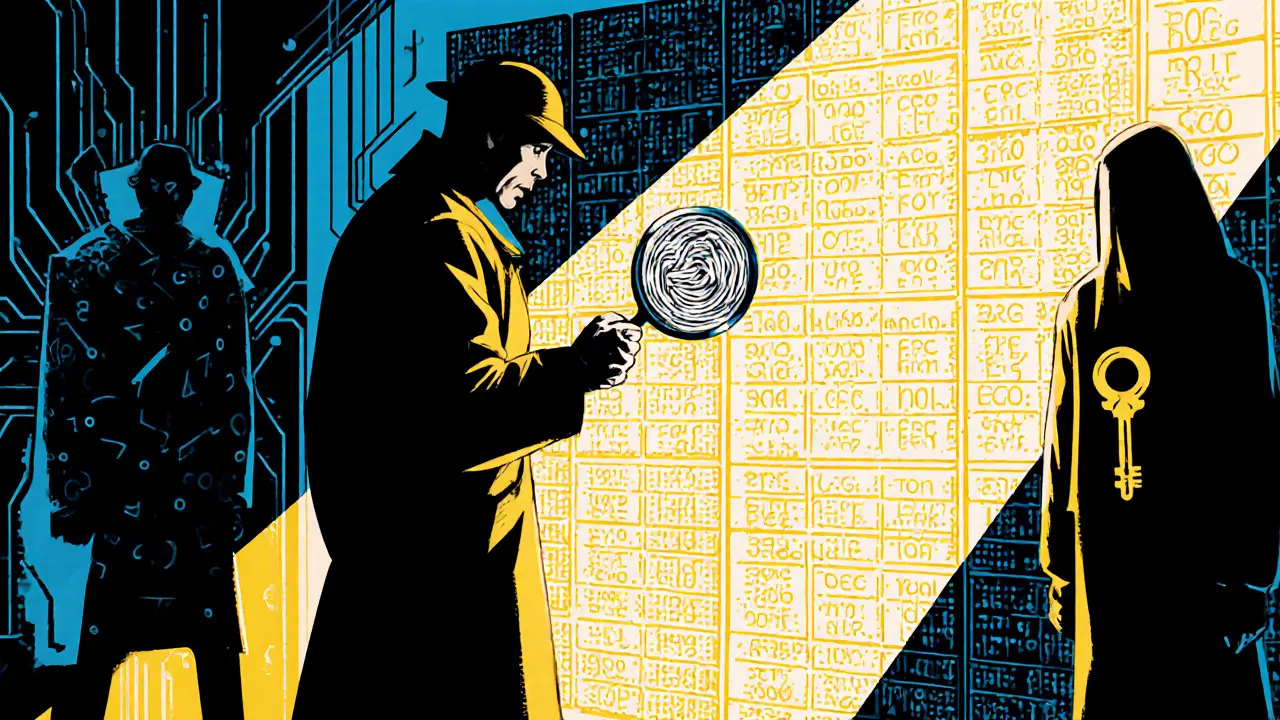
zk-SNARKs vs zk-STARKs Comparison Tool
This tool compares the key features of zk-SNARKs and zk-STARKs, two important zero-knowledge proof systems used in blockchain technology.
zk-SNARKs
- Proof Size: ~200-300 bytes (constant)
- Verification Time: Milliseconds on a typical node
- Trusted Setup: Often required (unless using Halo 2 or similar)
- Security: Based on elliptic-curve assumptions (not quantum-resistant)
- Ecosystem: Mature with battle-tested libraries
zk-STARKs
- Proof Size: ~30-50 KB (grows with computation)
- Verification Time: ~100 ms - seconds, depends on statement size
- Trusted Setup: None - fully transparent
- Security: Built on hash-based commitments, quantum-resistant
- Ecosystem: Newer, fewer production-ready tools
Feature Comparison Table
| Feature | zk-SNARKs | zk-STARKs |
|---|---|---|
| Proof size | ~200-300 bytes (constant) | ~30-50 KB (grows with computation) |
| Verification time | Milliseconds on a typical node | ~100 ms - seconds, depends on statement size |
| Trusted setup | Often required (unless using Halo 2 or similar) | None - fully transparent |
| Post-quantum security | Based on elliptic-curve assumptions (not quantum-resistant) | Built on hash-based commitments, quantum-resistant |
| Ecosystem maturity | Libraries like libsnark, bellman, snarkjs are battle-tested | Newer, fewer production-ready tools |
When to Use Each
Use zk-SNARKs when:
- You need tiny proofs
- Fast on-chain verification is critical
- You're working with mature ecosystems
- Privacy is needed but not absolute transparency
Use zk-STARKs when:
- You want complete transparency
- Quantum resistance is a concern
- Proof size isn't a strict constraint
- Working with newer, experimental systems
Note: While zk-STARKs offer more security and transparency, zk-SNARKs remain the go-to for scenarios requiring small proof sizes and fast verification times.
Ever wonder how a blockchain can keep a transaction totally private while still letting anyone verify it? The secret sauce is a cryptographic trick called zk-SNARKs. In this guide we’ll break down what zk‑SNARKs are, how they actually work, and why they matter for today’s blockchains.
Zero‑knowledge proofs in plain English
At its core, a zero‑knowledge proof lets a prover convince a verifier that they know something-like a secret key-without revealing the secret itself. Think of it as proving you have the right puzzle piece without showing the piece. The verifier gets mathematical certainty, the prover keeps the data hidden.
What are zk‑SNARKs?
zk‑SNARKs are Zero‑Knowledge Succinct Non‑Interactive Arguments of Knowledge, a type of proof that is tiny, fast to verify, and requires only one message from the prover to the verifier. They were first described in a 2012 paper by Nir Bitansky, Ran Canetti, Alessandro Chiesa, and Eran Tromer. The three buzzwords-succinct, non‑interactive, and argument of knowledge-tell you why they’re so powerful: the proof size stays small regardless of how big the underlying computation is, there’s no back‑and‑forth dialogue, and the verifier is guaranteed that the prover really knows the secret.
How a zk‑SNARK is built, step by step
Even though the math looks scary, the construction follows three logical stages that most developers can map onto code.
- Arithmetization: The original problem (like “the sum of these numbers equals 42”) is turned into a set of polynomial equations. This turns logical statements into algebra that computers love.
- Proof system creation: Using a cryptographic primitive called a polynomial commitment, the system builds a short proof that the equations hold, without revealing the inputs.
- Compilation to a circuit: The equations are expressed as an arithmetic circuit-a network of add and multiply gates. This circuit becomes the "program" the prover runs to generate the proof.
When the prover runs the circuit, they produce a proof that is typically a few hundred bytes. The verifier only needs to run a quick pairing check (a kind of elliptic‑curve operation) that finishes in milliseconds.
Trusted setup and the move to trust‑less designs
Traditional zk‑SNARKs need a trusted setup a one‑time ceremony that creates public and secret parameters used to generate and verify proofs. If the secret part leaks, an attacker could forge proofs and create money out of thin air. That risk has made many projects nervous.
Enter Halo 2 a recursive SNARK construction introduced in Zcash’s NU5 upgrade that removes the need for a trusted setup while keeping proof sizes tiny. Halo 2 builds on a concept called "recursive composition"-a proof can attest to the correctness of another proof, allowing the system to bootstrap itself without external secrets.
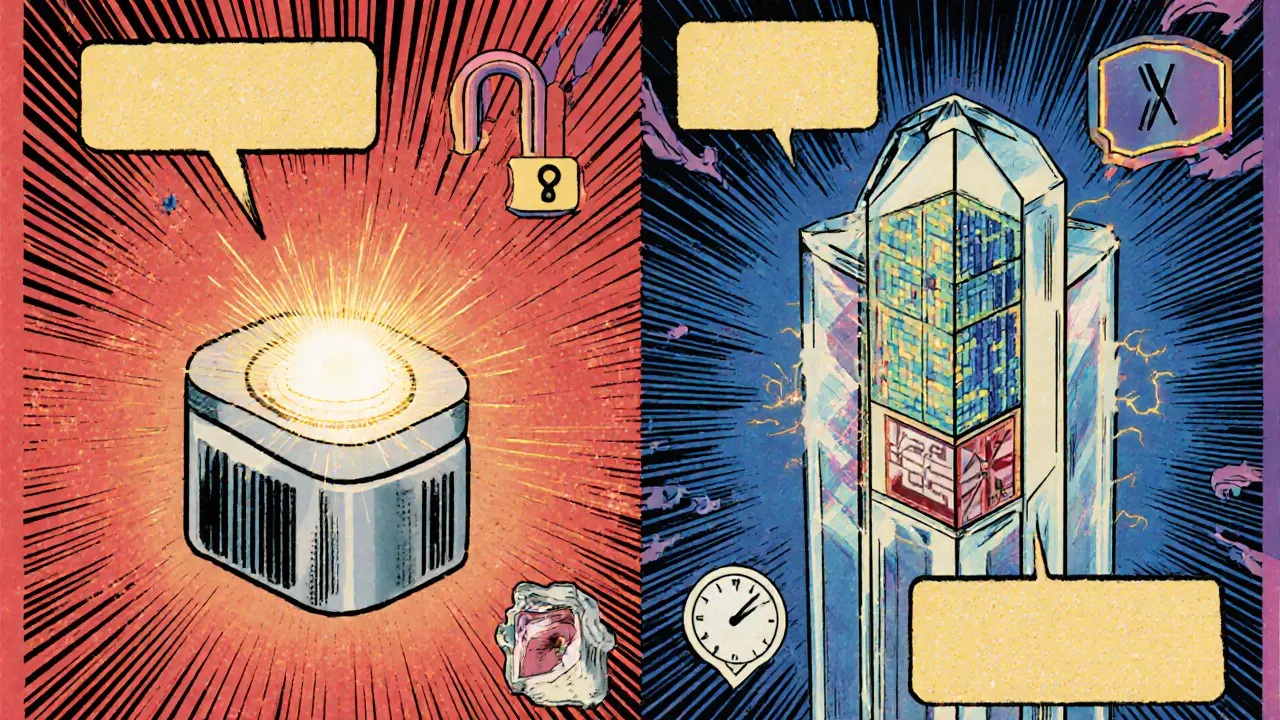
zk‑SNARKs versus zk‑STARKs
If you’ve heard about zero‑knowledge, you’ve probably also heard about zk‑STARKs. Both aim for privacy, but they differ on three axes: proof size, verification speed, and transparency.
| Feature | zk‑SNARKs | zk‑STARKs |
|---|---|---|
| Proof size | ~200‑300bytes (constant) | ~30‑50KB (grows with computation) |
| Verification time | Milliseconds on a typical node | ~100ms‑seconds, depends on statement size |
| Trusted setup | Often required (unless using Halo 2 or similar) | None - fully transparent |
| Post‑quantum security | Based on elliptic‑curve assumptions (not quantum‑resistant) | Built on hash‑based commitments, quantum‑resistant |
| Ecosystem maturity | Libraries like libsnark, bellman, snarkjs are battle‑tested | Newer, fewer production‑ready tools |
In short, if you need tiny proofs and fast on‑chain verification, zk‑SNARKs are still the go‑to. If you want complete transparency and quantum safety, zk‑STARKs are the future.
Real‑world deployments that prove the concept
The poster child for zk‑SNARKs is Zcash a privacy‑focused cryptocurrency that uses zk‑SNARKs to shield transaction data while staying verifiable by the network. Every Zcash shielded transaction hides the sender, receiver, and amount, yet miners can still confirm that no double‑spends occurred. The network processes thousands of these private payments daily, showing that the tech scales beyond laboratory tests.
Beyond payments, developers are building confidential smart contracts, where contract logic runs as usual but intermediate values stay secret. Voting platforms use zk‑SNARKs to prove a voter is eligible without exposing who they voted for, eliminating coercion risks. On the scaling side, Ethereum’s zk‑rollups (e.g., zkSync, StarkNet) batch hundreds of transactions into a single SNARK proof, cutting gas costs dramatically.
Building your own zk‑SNARK: tools and common hurdles
If you’re a developer thinking “let’s try this”, the ecosystem offers a few starter kits.
- Circom a domain‑specific language for describing arithmetic circuits that become SNARK proofs. Write a .circom file, compile it, and you get a constraint system.
- snarkjs a JavaScript library that handles key generation, proof creation, and verification for Circom circuits. Great for web‑based demos.
- libsnark a C++ library behind Zcash’s original implementation, offering low‑level control and performance. Preferred for production‑grade backends.
Typical challenges include:
- Designing an efficient circuit - every extra gate balloons proof‑generation time.
- Managing the trusted‑setup ceremony - even with Halo 2 you need to verify the recursive steps correctly.
- Debugging incorrect constraints - a single typo can make a proof always fail.
Expect a learning curve of a few months if you’re new to elliptic‑curve math, polynomial commitments, and constraint‑satisfaction problems.
Where zk‑SNARKs are headed
Adoption is accelerating. Layer‑2 solutions on Ethereum now ship daily with SNARK‑based rollups, slashing fees by up to 100×. Enterprises are piloting privacy‑preserving audits where regulators can verify compliance without seeing raw data. Researchers are polishing recursive SNARKs to enable truly trust‑less cross‑chain bridges, so assets can move between chains without revealing amounts.
Analysts predict that by 2027, at least half of major blockchain projects will embed some form of zero‑knowledge proof, with zk‑SNARKs remaining the workhorse for low‑latency, on‑chain verification.
Frequently Asked Questions
What does the ‘SNARK’ part of zk‑SNARK stand for?
SNARK means Succinct Non‑Interactive Argument of Knowledge. ‘Succinct’ refers to the tiny proof size, ‘Non‑Interactive’ means only one round of communication, and ‘Argument of Knowledge’ guarantees the prover actually knows the secret.
Do I need a trusted setup to use zk‑SNARKs?
Classic zk‑SNARKs require a one‑time trusted setup. However, newer constructions like Halo 2 or recursive SNARKs remove that requirement, so you can choose a setup‑free variant if you prefer.
How do zk‑SNARKs differ from regular digital signatures?
A signature proves you own a private key, but it reveals the signed data. A zk‑SNARK proves you know a piece of data (or performed a computation) without showing the data itself, offering privacy on top of authenticity.
Can zk‑SNARKs be used on any blockchain?
In principle yes, but the chain must support custom verification logic (pre‑compiled contracts or on‑chain VM extensions). Ethereum, Binance Smart Chain, and Polygon already have SNARK verification opcodes, while newer chains are adding native support.
What are the main performance bottlenecks?
Proof generation can take seconds to minutes for complex circuits, because the prover must evaluate many polynomial commitments. Verification is fast (milliseconds), so the bottleneck is usually on the proving side, not on-chain.

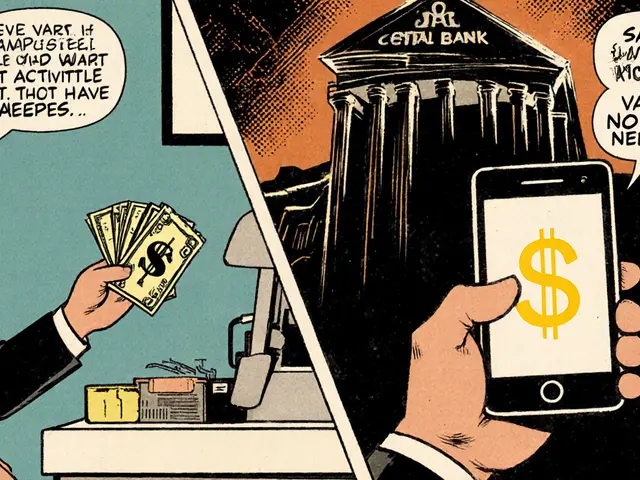
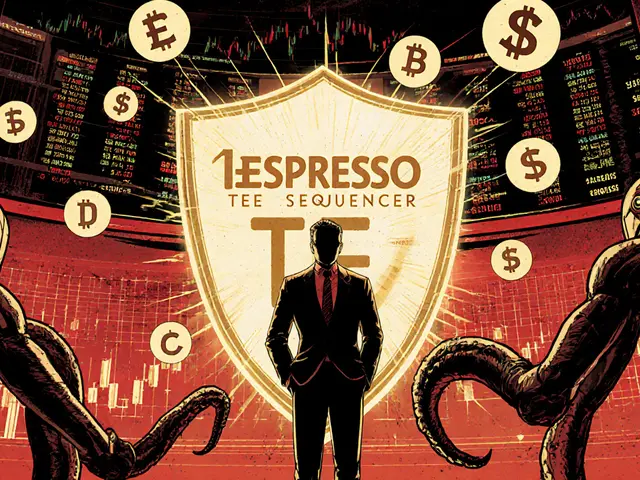
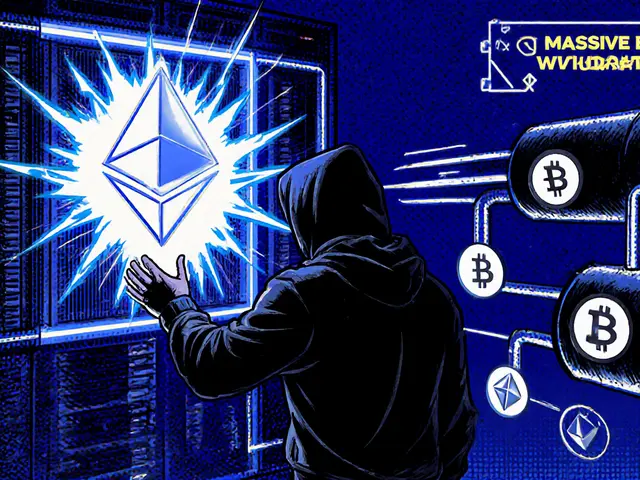


There are 15 Comments
mark gray
Great overview, the guide breaks down zk‑SNARKs in a clear way. The comparison table helps see when to pick SNARKs over STARKs. I appreciate the mention of trusted‑setup risks and the newer Halo 2 solution. Overall, a solid read for anyone new to zero‑knowledge.
Alie Thompson
While the technical details are fascinating, we must not lose sight of the ethical dimension of deploying privacy tools. It is morally dubious to hand out powerful anonymity without considering the societal impact. Developers have a duty to ensure that zk‑SNARKs are not weaponized for illicit activity. Transparency, even in cryptographic systems, is a cornerstone of trust. Ignoring the consequences invites regulatory backlash and public mistrust. Moreover, the reliance on trusted setups raises questions about centralization of power. If a small group controls the ceremony, they hold the keys to potential abuse. This is why the community should push for trustless alternatives like Halo 2. The practice of periodic audits and open ceremonies should become standard. Education of end‑users about the limits of privacy is also essential. We must not treat privacy as a free-for‑all but as a privilege that carries responsibility. In the blockchain sphere, where incentives are misaligned, the temptation to cut corners is high. Ethical guidelines, akin to medical ethics, should be drafted for zero‑knowledge developers. The guide correctly highlights the trade‑offs, yet it could stress more the moral imperative for careful deployment. Ultimately, technology is neutral; it is our choices that define its impact on humanity.
Samuel Wilson
The article presents a concise yet comprehensive explanation of zk‑SNARKs. Its structure, moving from fundamentals to practical tooling, aligns well with pedagogical best practices. The inclusion of circuit compilation and trusted‑setup considerations is particularly valuable for developers. I would suggest adding a brief note on performance profiling when designing constraints.
Rae Harris
Honestly, the guide skips over the nitty‑gritty of recursive SNARKs, which is where the real hype lives. If you’re into scaling, you need to dig into halo‑2 and its roll‑up potential. The jargon‑heavy sections could use a bit more layman gloss, though.
Danny Locher
Nice walkthrough! I especially liked the part about using Circom for building circuits.
Emily Pelton
Excellent breakdown, but let’s be real – the trusted‑setup drama is a massive flaw, and developers need to stop glossing over it, especially when users are entrusting real value! The ecosystem’s maturity is impressive, yet the security trade‑offs demand louder warnings! Keep pushing for setup‑free solutions, or we’ll keep seeing unnecessary risk exposure!
Gaurav Gautam
What a solid primer! If you’re just starting, dive into the Circom tutorials and experiment with snarkjs – the learning curve is steep but rewarding. Remember, every extra gate adds proof‑generation time, so keep your circuits tight.
Cody Harrington
Good points on circuit efficiency. Keeping constraints minimal really speeds up proving.
Chris Hayes
The guide balances technical depth with accessibility nicely. However, I’d caution readers that proof generation can become a bottleneck for complex applications. Optimising circuits early saves a lot of headaches later.
victor white
While the exposition is lucid, one must wonder whether the industry’s rush to adopt zero‑knowledge hides deeper power structures. The opaque nature of trusted setups could be a vector for covert influence, don’t you think?
Fiona Chow
Oh great, another "simple guide" that pretends zk‑SNARKs are magic. Sure, they’re cool, but don’t forget the massive infrastructure you need behind the scenes.
Rebecca Stowe
Even if it’s complex, the article does a good job of breaking things down. Keep exploring – the future of privacy is bright!
Aditya Raj Gontia
The article is okay.
kishan kumar
In the grand tapestry of cryptographic evolution, zero‑knowledge proofs occupy a singular niche, embodying both the elegance of mathematical abstraction and the pragmatism of real‑world application. One might argue that zk‑SNARKs, with their succinct proofs and sub‑millisecond verification, represent a culmination of decades of theoretical progress, yet they remain tethered to the antiquated notion of a trusted setup, a relic that beckons scrutiny. Philosophically, this dichotomy mirrors the tension between order and chaos: the deterministic nature of polynomial commitments contrasted against the stochastic uncertainty of secret parameters. The advent of Halo 2, a recursive SNARK construction, seeks to dissolve this paradox, offering a self‑sustaining ecosystem where proofs bootstrap themselves, thereby restoring epistemic integrity. However, the journey is not without obstacles; each additional recursion layer introduces computational overhead, demanding a recalibration of resource allocation. Moreover, the broader community must grapple with the sociopolitical ramifications of privacy‑enhancing technologies, lest they become the scaffolding for illicit enterprises. As we stand at the cusp of mainstream adoption-evidenced by zk‑rollups proliferating across Ethereum Layer‑2 solutions-the ethical imperative to educate developers and users alike becomes paramount. Embracing transparency, fostering open‑source collaboration, and instituting rigorous audit practices can mitigate the specter of misuse. Ultimately, the trajectory of zk‑SNARKs is not merely a technical narrative but a reflection of humanity’s pursuit of trust without surrendering secrecy. May we navigate this path with both curiosity and caution, ever mindful of the delicate balance between empowerment and responsibility. :)
Anthony R
Well‑written guide, it covers most essential aspects, and the examples are clear, concise, and useful. The comparative table succinctly highlights the trade‑offs, which helps readers decide which proof system aligns with their needs. I would suggest adding a section on future research directions, especially regarding post‑quantum security. Overall, great job!
Write a comment
Your email address will not be published. Required fields are marked *